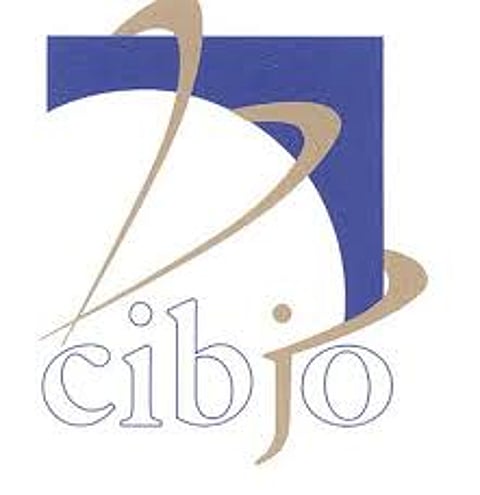

CIBJO, the World Jewellery Confederation, has described as ground-breaking the publication by the International Standards Organisation of ISO 24016, the first-ever standard approved by the body that specifies the terminology, classification and the methods to be used for the grading and description of single unmounted polished diamonds.
“This is a historic moment for our industry,” said CIBJO President Gaetano Cavalieri, “for it is the first time than a strictly defined diamond grading system has been ratified by the world’s leading standards body, formally recognizing principles and terminology that to date have not been approved by any impartial and international authority. ISO 24016 essentially parallels the CIBJO Diamond Blue Book, meaning that our widely-accepted standard is now effectively validated by ISO.”
“The aim of a standard for grading unmounted polished diamonds is to set rules for determining with maximum precision and accuracy the mass, colour, clarity and cut of individual polished diamonds,” ISO 24016 notes in its introduction. “On one hand, based on these four criteria – also known as ‘the 4Cs’ – the diamond trade evaluates the value of diamonds. On the other hand, some diamond grading reports may be issued based on different standards by different laboratories, potentially leading to different results for the same individual diamond. This situation damages the reputation of the whole diamond trade. Hence, the need for a unique ISO standard for grading polished diamonds.”
ISO 24016 applies to natural, unmounted, polished diamonds of more than 0.25 carats. It is a comprehensive technical document, 55 pages in length, providing detailed information with tables and figures. It expressly does not apply to fancy coloured diamonds, synthetic (laboratory-grown) diamonds, diamonds treated by methods other than laser drilling, nor to assembled stones.
It is the second standard issued by the International Standards Organisation dealing specifically with diamonds. ISO 18323, which was released in 2015, defined specific nomenclature for natural diamonds, synthetic diamonds and diamond simulants. It was reconfirmed last week after a five-year systematic review process.
Headquartered in Geneva, ISO is an independent, non-governmental international organisation, to which are are affiliated 165 national standards bodies. It operates 333 Technical Committees covering 253 sectors, among them food and agriculture, energy, health, mechanical engineering, communications, and more, bringing together experts that share knowledge and develop voluntary, consensus-based, market-relevant international standards that support innovation and provide solutions to global challenges. To date, more than 23,000 ISO standards have been issued. Issues in ISO related to jewellery and precious metals are handled by Technical Committee 174, chaired by Dr. Jonathan Jodry, which has participants and observers from 40 countries and is responsible for more than 25 international standards.
The process of developing a new standard for diamond grading began two years ago at the request of Schweizerische Normen-Vereinigung (SNV), the Swiss Association for Standardisation. The initial stage of preparing a draft document was accelerated in 2018, when CIBJO granted ISO permission to use its own Publicly Available Specification PAS 1048, based on the CIBJO Diamond Blue Book, as a basis for drafting the new ISO standard. Jean-Pierre Chalain, Vice President of CIBJO’s Diamond Commission, was designated as the convenor of TC174 Working Group 2, to oversee the project.
The process of deliberation and review took about two years to complete, and was managed thanks to the dedication of a team of internationally renowned diamond experts from 10 different countries. After consensus among the technical specialists was reached, the draft was shared with all ISO National Members from the Technical Committee for further comments, and then a final draft was sent to all ISO TC members for ratification.
“This a massive achievement for the diamond industry, and it was achieved through hundreds of hours of hard work, and a painstaking international vetting process,” said Udi Sheintal, President of CIBJO’s Diamond Commission. “Now, for the first time, we can say without equivocation that a entire gemstone category, namely diamonds, has been fully addressed by the International Standards Organisation, which through ISO 24016 and ISO 18323 comprehensively provides an accurate definition of diamonds, and the ways in which they are described and graded. Furthermore, with both standards being so closely associated with the CIBJO Diamond Blue Book, we can take great pride in our processes and professionalism.”
“There is no doubt in my mind that these two international ISO standards, together with the CIBJO Diamond Blue Book, will help boost consumer confidence,” Mr. Sheintal said. “The timing is particularly relevant, especially now when clear distinctions must be made between laboratory-grown diamonds and natural diamonds. Mr. Chalain stressed that major asset of the standard ISO 24016 is that will be regularly subject to a systematic review process, to ensure that it remains relevant to the needs of the diamond trade. He thanked all the various participants in two-year process, and in particular CIBJO President Gaetano Cavalieri, CIBJO Diamond Commission President Udi Sheintal, Rudi Biehler, ISO TC 174 Chair Jonathan Jodry, ISO TC 174 Secretary Petra Bischoff, and Patrick Lötscher, Secretary of ISO TC 174 Working Group 2.
The new ISO 24106 standard can be purchased and downloaded from the ISO website at: https://www.iso.org/standard/79795.html.
Follow DiamondWorld on Instagram: @diamondworldnet
Follow DiamondWorld on Twitter: @diamondworldnet
Follow DiamondWorld on Facebook: @diamondworldnet
